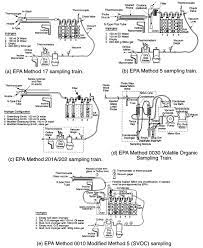EPA Method 0020
Data representative of current designs and operating practices regarding emission of PM2.5 and PM2.5 precursors, especially organic compounds and aerosols, from stationary petroleum industry combustion sources is sparse. The petroleum industry operates many stationary combustion devices in exploration, production, refining, and marketing activities.
The vast majority of these devices are gas-fired, using process gases or natural gas. Emission of primary PM2.5 from gas-fired combustion sources is believed to be very low; however, emission of secondary aerosol precursors (NOx, SO2, SO3, NH3, VOC, etc.) from such sources also contributes to ambient PM2.5. Because of the large quantities of gas burned, the wide variety of combustion devices, and the wide range of process gas compositions, application of inappropriate data could implicate gas combustion as a significant source of ambient PM2.5. Improved characterization of stationary source emissions is required for reliable PM2.5 source apportionment.
Therefore, a test protocol for characterizing stationary source contributions, including primary and secondary aerosols, to ambient PM2.5 has been developed. Tests were performed on refinery combustion sources using both conventional source sampling methods and a dilution sampling approach. The paper discusses approaches for characterization of PM2.5 and PM2.5 precursors from stationary combustion sources and initial results of field measurements made using traditional and dilution sampling techniques. The results suggest that traditional source sampling methods for condensible aerosols may significantly overestimate emissions from gas-fired combustion devices.

There are no products listed under this category.